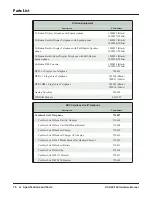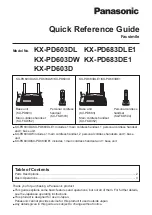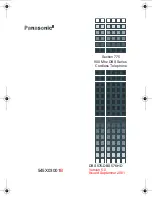
XEN Topaz
NEC Business Solutions Ltd
Features and Specifications Manual
Chapter 4 - 233
D
oc. N
o. 8846 -
Release
2.0
Apr
il 2005
Multiple Directory Numbers / Call Coverage
• Description
Multiple Directory Numbers let a system phone have more than one extension number.
Calls can route to the system phone’s installed number or to the system phone’s
“virtual extension” Multiple Directory Number key. This helps users identify incoming
calls. For example, an extension installed at 304 (Sales) could have a virtual extension
for 460 (Service). Calls to 304 ring the extension normally. Calls to 460 ring the Multiple
Directory Number key. This lets the user at extension 304 differentiate Sales calls from
Service calls.
Call Coverage
A system phone can have Multiple Directory Number keys set up as Call Coverage
keys for co-worker’s extensions. The Call Coverage key lights when the co-worker’s
extension is busy and flashes slowly when the co-worker has an incoming call. The
Call Coverage key can ring immediately when a call comes into the covered extension,
ring after a delay or not ring at all. In addition, the system phone user can press the Call
Coverage key to intercept their co-worker’s incoming call. The user can also go off
hook and press the Call Coverage key to call the covered extension.
If the covered extension is busy and they receive a second call, the covering
extension’s Call Coverage key will flash. The user just presses the flashing key to pick
up the call.
The Call Coverage keys follow the extension’s Do Not Disturb and Off-Hook Signalling
programming. These keys do not, however, indicate the lamping for extensions in
DND. If this is required, a Hotline key can be used instead.
Place and Receive Calls on Call Coverage/Multiple Directory Number Keys
Multiple Directory Number keys/Call Coverage keys can be used three separate ways,
depending on how the key is defined in Program 15-02-21.
•
A DSS key to the extension and for receiving incoming calls
•
Answering incoming calls with the ability to place outgoing ICM or CO
calls
OR
•
Just for receiving incoming calls
A system phone can have Multiple Directory Number/Call Coverage keys for many
different extensions and virtual extensions. In addition, co-workers can share the same
Multiple Directory Numbers. For example, everyone in the Service Department could
have a key for the Sales Department’s virtual extension.
Auto Off-Hook Answer and Ringing Line Preference for Call Coverage Keys
An extension’s Call Coverage Keys can be programmed to allow the user to simply
pick up the handset to answer a ringing call. So as not to interfere with ringing trunk or
Intercom calls, the system automatically assigns Call Coverage Key ringing with the
lowest answering priority. If multiple Call Coverage Keys are ringing, answering priority
is set first by the assigned ring pattern and then by the key position.
















































